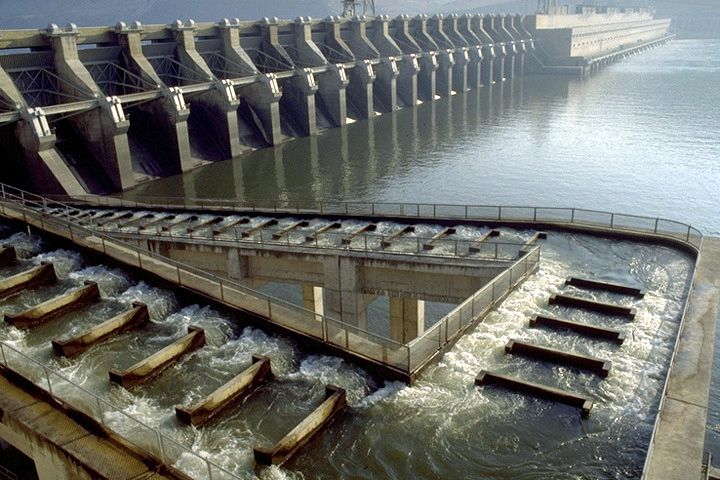U.S. DOE Invites Applicants for Fish Passage Technology Funding
Published on by Water Network Research, Official research team of The Water Network in Technology
The U.S. Department of Energy's Water Power Technologies Office (WPTO) announced $2.5 million in available funding for innovative upstream and downstream solutions to provide an effective fish passage through hydropower dams while reducing construction and operation costs.

Representative image, John Day Dam fish ladder, Source: Wikimedia Commons, Author: USACE
Important aspects of sustainable hydropower involves avoiding, mitigating, and reducing impacts to the environment. Through its HydroNEXT initiative, the Water Power Technologies Office (WPTO) is committed to lowering the cost of hydropower deployment while significantly reducing the environmental footprint of new and existing technologies.
Fish passage provides a way for fish to get around barriers like dams or impoundments, and is one way hydropower owners and operators can help preserve environmental integrity and river connectivity and enable natural downstream and upstream fish migrations.
Optimized and cost-effective fish passage technologies will let hydropower owners and operators meet rigorous permitting requirements and bring more hydropower online faster. The funding announcement includes two topic areas:
- Topic Area 1—Testing the Effects of Innovative Fish Passage Technologies: This topic area covers innovative technologies that can reduce construction and/or operational costs associated with either upstream or downstream fish passage at a hydropower dam to improve efficiencies of volitional fish passage—allowing fish to migrate around a barrier without human intervention.
- Topic Area 2—Advancing Innovative Methods and Technologies to Improve Fish Passage: This topic area is focused on technologies and research that can improve the efficiency and effectiveness of volitional fish passage, such as advances in detection, sorting, and counting techniques.
Technologies must demonstrate how new designs will improve efficiency and cost and demonstrate broad applicability to a variety of different hydropower sites.
Decreasing environmental impacts helps realize the nation’s potential for future sustainable hydropower growth and optimization of the existing U.S. fleet. By making early-stage investments to accelerate and commercialize new technologies, WPTO ensures that the nation’s hydropower fleet continues to generate clean electricity and provide grid stability and bulk storage.
Source: Energy.gov
Media
Taxonomy
- Technology
- Ecosystem Management
- River Studies
- Ecosystem Management
- River Engineering
- Dams
- Hydrology